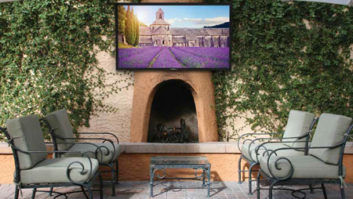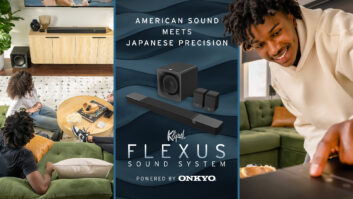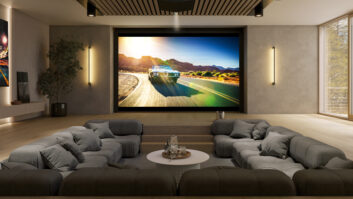It’s the first question out of most people’s mouths when they’ve heard someone has bought a new television. When people are considering buying a new TV—or are simply browsing while they save money for one—they almost always seem to be singularly focused on one aspect: image quality.
You can’t blame them, of course; the last few years alone have seen tremendous strides in improving picture quality, not only the resolution from 1080p to UHD and 4K but also HDR (High Dynamic Range) to get much higher contrasts. There’s far more to the quality of the picture on the screen when it comes to selling a true immersive entertainment experience.

Image: Thinkstock
Case in point, audio quality has seen enormous improvements lately, and should have equal standing when it comes to selling a home theater setup. Surround sound, once heralded as the big new thing, is now old news. Today, the cutting-edge selling points should be aspects that make entertainment immersive—and that’s something audio does moreso than video can ever hope to accomplish. Oddly enough, though, consumers haven’t responded to these audio improvements that much—mostly because they don’t know about them. We need to rectify this by creatively explaining just how important true 3D audio is (called “immersive sound”) to the overall home theater experience.
The fact that consumers don’t seem to care about audio is problematic—if someone buys a 4K TV but they only get a subpar sound system, they’ll be missing out on half the experience. A HD screen with a good 3D Audio system results in a much more immersive experience compared to a 4K picture with standard surround sound (which is only a 2D speaker layout and not 3D, as commonly believed).
It is often underestimated how magical the addition of the missing and third dimension in sound (height) can be. When designing the Auro-3D format (back in 2005), it took me a while before I really understood the power of that subconscious process of being in the middle of a “vertical stereo field all around” and how it creates a higher emotional impact, not only in movies, but also in music, games, sport events, and beyond.
The good news is that consumers would be willing to make the extra investment if they realize that they’re missing out. So how do we make them realize what a game changer immersive sound is? By demonstrating it.
While browsing televisions in stores, customers should be able to, with a push of a button, hear how a movie sounds with standard audio, and then in immersive sound across existing formats. Something like this would take less than five minutes to exhibit—but would demonstrably change the consumer’s understanding of audio systems.
TV isn’t only about the amount of pixels we can fit on a screen, or the vividness of color; it’s about experiencing the sound like we’re actually there. Immersive sound is a game changer, and has been adopted by most production studios in one format or another, whether it’s in Auro-3D, Dolby Atmos, or DTS:X. Consumers who don’t have immersive sound equipment are already missing out on an important aspect of the watching experience, which makes it more imperative that they be informed about the latest audio technology at every touch point of the sales funnel.
There’s no question that consumers care about the quality of their content and electronics. The only issue is that they’re unaware about the full breadth of technology available to them, and therefore don’t know what they’re missing out on. But industry professionals are already exploring various ways to demonstrate just how important audio systems are. If that trend continues, it’s only a matter of time before consumers realize what they’re missing out on.







